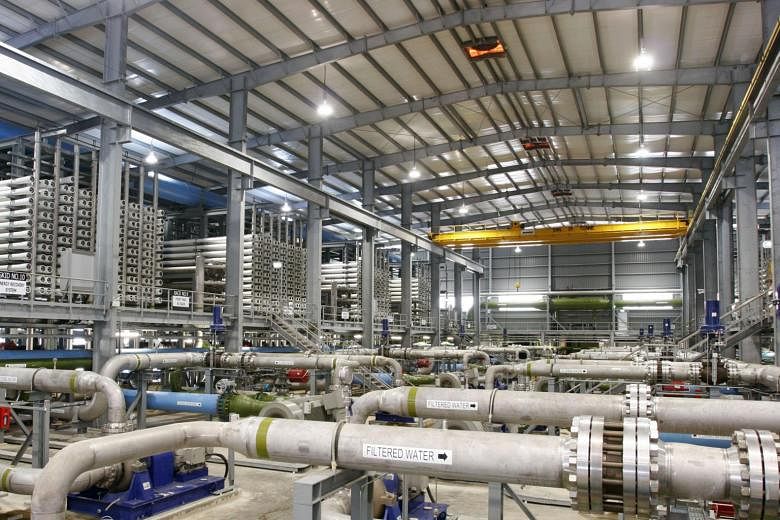Singapore's fourth desalination plant, which is set to be completed by 2019, will be the first to treat both fresh and sea water.
When operational, the plant will meet the water needs of the central and eastern parts of the island.
National water agency PUB will call for a tender today for the construction of the plant in Marina East, which will be able to produce up to 30 million gallons of fresh drinking water a day.
PUB said in a press release yesterday that the successful bidder will design, build, own and operate the desalination plant.
The building of the fourth plant is part of the Government's plan to expand its desalination and Newater capacities to meet up to 85 per cent of Singapore's water needs by 2060.
-
Meeting nation's water needs
-
SINGSPRING DESALINATION PLANT
Located in Tuas, the plant opened in 2005 and can supply up to 30 million gallons of water each day.
TUASPRING DESALINATION PLANT
Built in 2013, the plant in Tuas is the biggest one in Singapore. It can produce up to 70 million gallons of water a day.
THIRD PLANT
To be completed by next year, the plant will add another 30 million gallons of water a day to Singapore's water supply.
FOURTH PLANT
With a capacity to produce 30 million gallons of water a day, or about 7 per cent of current water demand, the plant in Marina East, to be built by 2019, will be able to meet demand in the city area as well as the eastern part of Singapore. It can also treat freshwater from the nearby Marina Reservoir.
FIFTH PLANT?
PUB is exploring building a fifth water desalination plant on Jurong Island.
Carolyn Khew
Associate Professor Darren Sun from the Nanyang Technological University's School of Civil and Environmental Engineering said that in the light of climate change, water sustainability is a major concern for Singapore.
"We need to build resilience to combat climate change, in long periods without rain," said Prof Sun.
"The versatile plant will enable us to continuously produce high-quality water from both sea water and fresh water from the marina catchment, while maintaining healthy water levels in the reservoirs."
Singapore currently has two desalination plants. Both of them are in Tuas and, together, can produce a total of 100 million gallons of water a day.
The construction of a third plant in Tuas is expected to be completed next year. This will add another 30 million gallons of water a day to Singapore's water supply.
Mr William Yeo, PUB's director of policy and planning, said: "Like Newater, desalinated water is independent of rainfall and can be used to supplement our other water sources during dry weather."
During the debate on the Ministry of the Environment and Water Resources' budget on Tuesday, minister Masagos Zulkifli said he was worried about the challenge that extreme weather patterns stemming from climate change could pose to water sustainability.
Water levels in the Linggiu Reservoir, which helps to supply half of Singapore's water needs, fell to a new historic low of 36.9 per cent on Tuesday.
Singapore's current water demand stands at about 430 million gallons of water per day and this could more than double by 2060 - with non-domestic water demand estimated to make up 70 per cent of overall water use.


